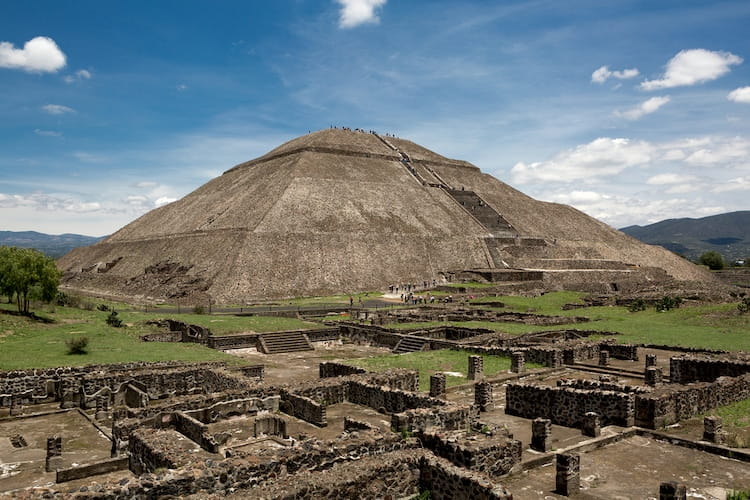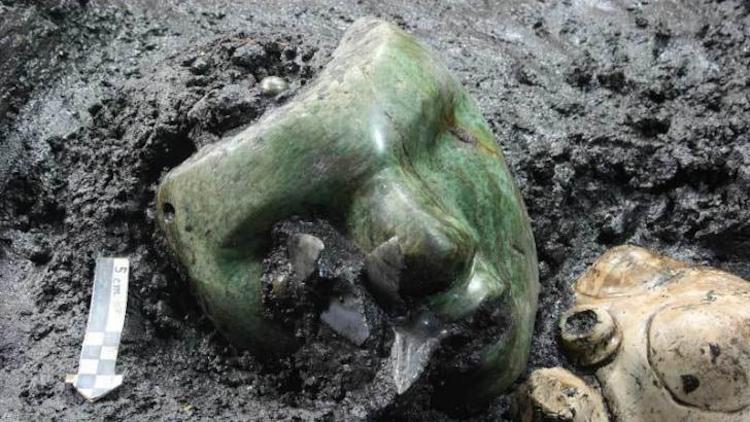2,000-Year-Old Realistic Green Mask Found Nestled Inside an Ancient Pyramid
Mexico is filled with incredible archeology that gives clues about its rich pre-Columbian history. One of the most impressive structures, the Pyramid of the Sun, is full of new surprises.
As the largest building in Teotihuacan, archaeologists have been continuously studying the structure, which was built around 100 CE. Though few artifacts have been found on-site, in 2011 a surprising discovery was made by researchers from Mexico’s National Institute of Anthropology and History (INAH).
By using a 380-foot-long tunnel dug by archeologists in the 1930s, the group was able to get to the mother-rock level. Once there, they discovered a rare cache of treasures.

This included shards of clay pottery, animal bones, pieces of obsidian, three serpentine human figurines, and a stunning serpentine mask. The green mask is particularly interesting because, at the time of its discovery, it was the only mask of its kind to be found in a ritual context in Teotihuacan.
It’s believed that these offerings were left as part of a ritual to inaugurate the construction of the pyramid—hence its location at the lower level. The mask itself is extremely lifelike, which gave rise to the theory that it’s actually a portrait.
This would be incredible, as archeologists have little information about the people who constructed Teotihuacan. There are also conflicting theories about the exact use of the pyramid. Even the name isn’t original.
It was actually the Aztecs, who visited Teotihuacan centuries after it was abandoned, that named it Pyramid of the Sun. The original name of the world’s third-largest pyramid remains unknown.
Teotihuacan was a thriving city once called the City of the Gods. At its peak, 200,000 people called it home. And yet, researchers have little to no idea who these dominant people were and why they vanished without a trace.
With so much information to discover, it’s not a surprise that INAH continues to conduct research in the area. In fact, more recently, an underground tunnel was found under the nearby Pyramid of the Moon. By using electrical resistance technology, they were able to map the tunnel without breaking ground.

The subterranean chamber, which is proceeded by a chamber measuring 49 feet in diameter, could be the home of even more treasures. Hopefully, these cumulative findings will shed more light on this great civilization and reveal more about its demise.
“These large offering complexes constitute the sacred heart of the city of Teotihuacán, the reason why everyone saw it as the mecca of the civilization,” said Verónica Ortega, director of the Integral Conservation Project for the Plaza of the Moon.
“What can be found inside them will help unravel the relationship this ancient metropolis had with other regions of Mesoamerica.”




